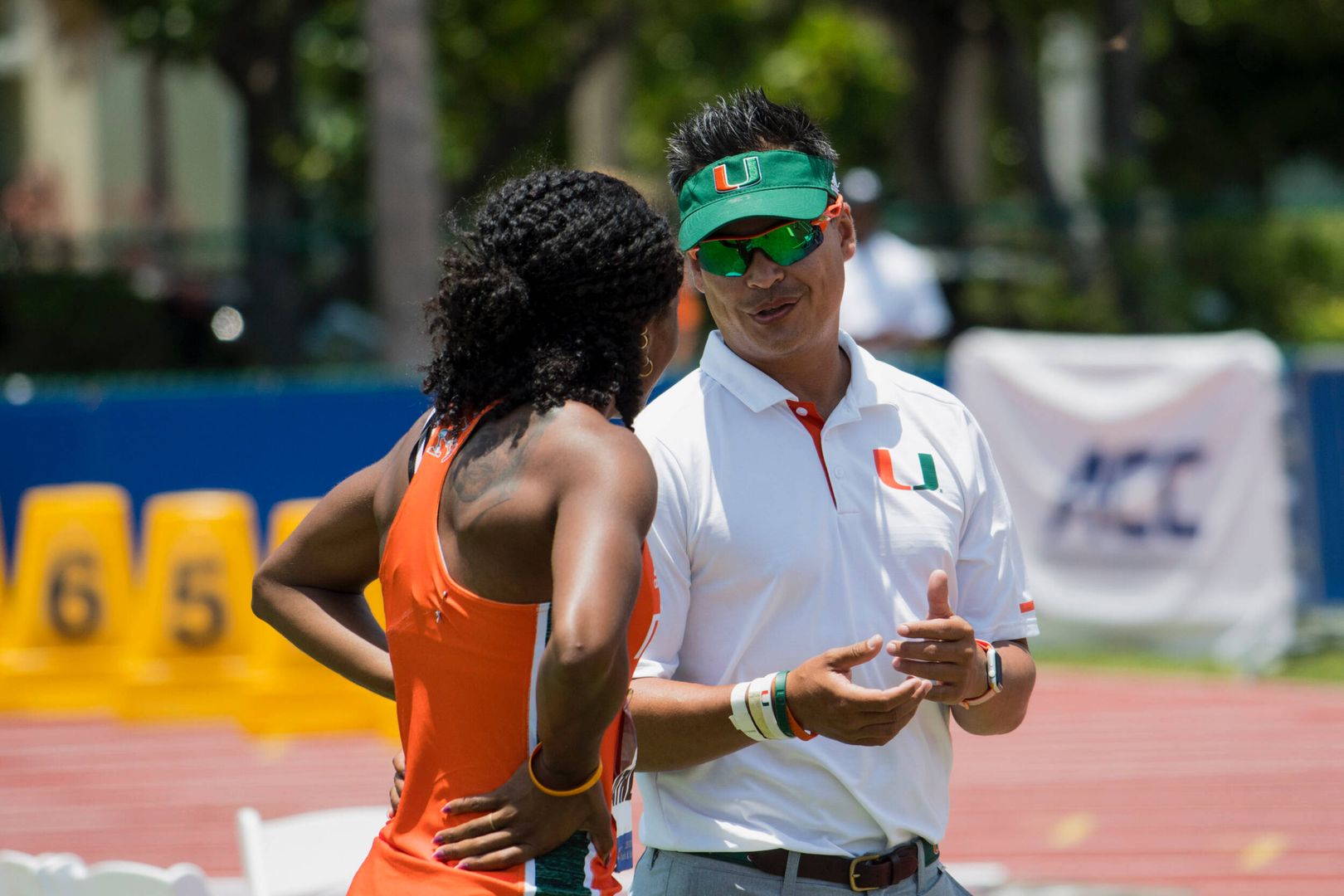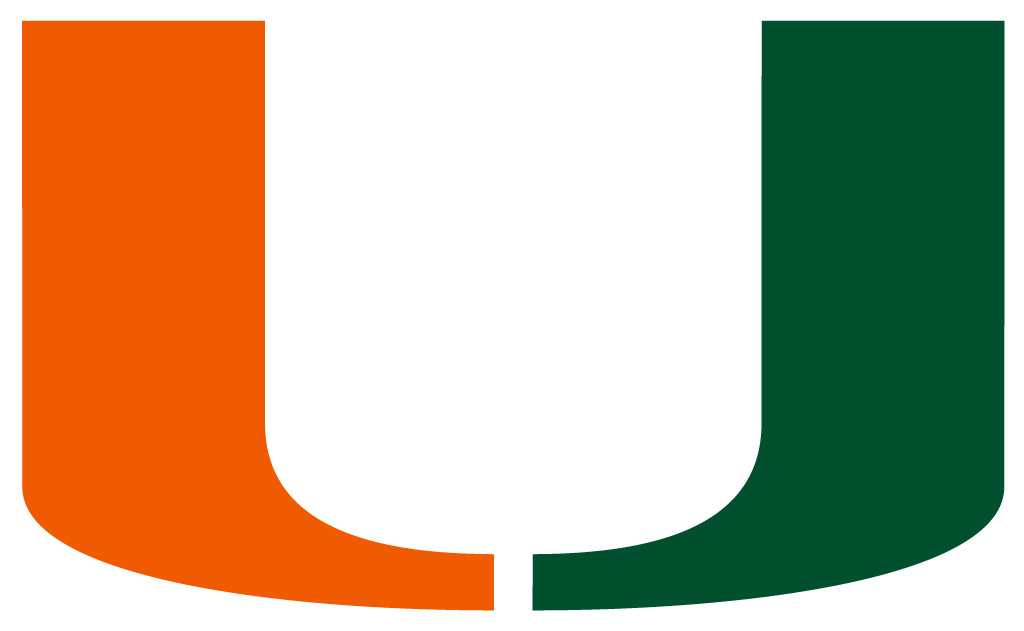
Jarvis Turns Nightmare Into Dream Job
CORAL GABLES, Fla. – Just one look in the rearview mirror and his career and life were almost ended in 2014.
A road trip that started in Brentwood, Calif., to get his belongings for his new job at IMG Academy in Bradenton, Fla., almost took it all away from him.
When Robert Jarvis was driving his red Chevy truck through intense fog on the I-10 in Texas, he was rear-ended by an 18-wheeler causing his truck to flip numerous times to finally land on the roof in the middle of the interstate.
When Jarvis regained his bearings, survival instincts kicked in. They always have and that is a trait that has served him well throughout his career.
—-
A southern California native, Jarvis played wide receiver two years for San Diego State University. But a meniscus tear in his knee and a serious concussion during fall football camp in 1998 shifted his athletics path from the gridiron to track and field.
“I honestly think that if I continued to play, I would’ve been a football coach,” Jarvis said. “I was always around it and I’m super analytical about everything. I treat my job like chess, like it’s a series of steps or moves, so that would’ve been the next step if I was there for four years.”
SDSU dropped men’s track in the early ‘90s, which led Jarvis to look at another university in California. Landing on NAIA powerhouse Azusa Pacific University, Jarvis stretched out his remaining eligibility of five semesters over three years and regained his love for track and field.
He ranks among APU’s all-time list in five events, led off the national champion 4×400 relay team and was part of three All-American relay squads. Then, the talented 200 and 400-meter runner started to find his niche in the combined events when he started working out with fellow APU alumni and Olympic champion, Bryan Clay.
“I was his rabbit on his longer workouts because I was still a good quarter-miler, but I would train and compete all year with Azusa, and then in the summers I would carry his gear at the international meets like USAs and World Championships,” Jarvis said laughing. “That’s when I really got exposed to how big track and field actually is.”
The travel and exposure broadened his mindset on what he wanted to do next. He found a love for the business world watching his stepdad work as a defense contractor and graduated with a degree in business administration. But it was ultimately the idea of being able to travel the world and create relationships and connections along the way that pulled him into coaching.
“It was such an easy transition for me because we’re not just coaches, we wear so many hats that people don’t see,” Jarvis said.
Once his track and field career concluded at Azusa Pacific, Jarvis continued training with Clay and transitioned into an assistant coach for the team. Five years with Azusa Pacific not only gave Jarvis the start he needed as a coach, as the team combined for eight national championships while working with seven individual national champions, 49 All-Americans and 10 All-America relay teams, but the mentors that would catapult his career moving forward. Rana Reider and Jeremy Fischer, two of the top track and field coaches in the world, helped start Jarvis’s coaching career and are two of his biggest mentors to this day.
Reider, along with Azusa Pacific’s men’s head coach Kevin Reid and head women’s coach, Mike Barnett, were the three-headed giants that showed Jarvis how to coach a decathlete like Clay — a concept he uses now at Miami with 2019 NCAA pentathlon national champion, Michelle Atherley.
“That’s where I learned that it was possible to team-coach the combined events and that’s really when Rana took me under his wing,” Jarvis said. “There’s a lot to be said for those three guys coaching Bryan to an Olympic gold, silver, three world championship golds and two world championship silvers. One can’t argue with those results.”
Reider was the one who pushed Jarvis to really focus on his coaching career, challenging him and questioning him on what he was going to do next. Jarvis knew the speed and power events in and out, but it was the jumps that stuck out to him the most.
A photographic memory allowed him to replay a jump in his mind over and over before analyzing film. It was also his yearning to learn more that made him easy to coach in the eyes of Fischer.
“He was very inquisitive about all the different kinds of training and he’s got a great connection with the athletes,” said Fischer, the director of the U.S. Olympic Training Center said. “He’s a really good recruiter and is a great technician as far as a coach.”
But when Reider challenged him to “figure it out,” that’s all it took.
“I literally would stand next to him at track meets and just study how they were coaching and what they were saying to their athletes all the time,” Jarvis said. “They really spent a lot of time grooming and teaching me to get to where I am now, but not handing it to me. It was very old school, they let me fall on my face and I learned from my mistakes early to get better.”
He had his mentors guiding him in coaching, but Jarvis knew it was time to make his next move and become a Division I coach.
While searching for jobs, Jarvis started his own meet management company, RFTL (Run Fast Turn Left) Timing, which was successful and kept him afloat during what Jarvis felt like was his never-ending search.
But Jarvis got a chance when Barnett introduced him to the newly named men’s head coach at UCLA, Mike Maynard, and was hired on the spot. Jarvis made his way to a Division I power five program as a volunteer assistant.
Maynard challenged Jarvis instantly. He questioned what Jarvis had been studying over the years and found the only hole in his combined-events repertoire was throws. In 2010, Jarvis became the Bruins volunteer assistant throws coach.
“Maynard gave me this wry smile and winked and just told me I was now his volunteer throws coach,” Jarvis said. “At the time, it irritated me, but I’m glad he did it because I learned so much from him in that one year following him around in throws.”
After a year with throws, Maynard gave Jarvis the reigns to work the men’s horizontal jumps and decathletes. Marcus Nilsson, a medalist at World Juniors, and Dom Giovannoni were big-time recruits joining the Bruins squad. Maynard told Jarvis, ‘if you want a Division I job, you need to get someone to the NCAAs and score and do it again’.
In two years, that’s exactly what he did. Nilsson’s decathlon score improved from 7,751 points to 8,104, ranking third in UCLA history and Giovannoni climbed from 7,192 to 7,726 to finish seventh all-time for the Bruins during the same 2013 season.
Jarvis proved his worth and appreciates the lessons he learned from Maynard at UCLA.
“He prides himself on being a big logic guy and it’s interesting how we took a liking [to each other] because I’m a big analytical guy,” Jarvis said.
While coaching Nilsson with the Swedish national team at World Championships in 2013, Jarvis was introduced to Miami Director of Track and Field Amy Deem. There was an opening on Deem’s staff at “The U” and Jarvis was interested, but the offer didn’t come.
He continued to seek guidance from Reider and Fischer, which led him to Loren Seagrave, “the godfather of sprints in the U.S.” as Jarvis described him.
Seagrave approached Jarvis with the opportunity to coach high school athletes and work with a talented pool of professionals. Jarvis was initially reluctant, but the idea of training and coaching athletes like Darya Krishina (a Russian World Championship medalist), Tianna Bartoletta (a two-time Olympian with three gold medals), Keila Costa (a Brazilian four-time Olympian long jumper), Miguel Van Assen (CARIFTA Games gold medalist) and more started to change his mind.
Ultimately, Maynard was the one who pushed him to take the job and Jarvis made his way to IMG Academy in December of 2013.
Fewer than two months later, Jarvis nearly lost his life.
—
After moving to Bradenton and working at IMG Academy for a little over a month, Jarvis went back to California to get the rest of his stuff and complete the move to Florida, but the cross-country road trip led to disaster.
With the car rolling over and landing on its roof, the accident left Jarvis disoriented. But he managed to pull himself out of the passenger window with one arm.
“It was just so eerie hearing the traffic on the other side of the road, but you couldn’t see anything,” Jarvis said. “My adrenaline was pumping, my head was gashed open. I thought my arm was broken, my back was jacked. Next thing you know, I hear tires screeching.”
In what seemed like minutes later, another truck swerved and t-boned Jarvis’s car. A couple with two children were in the car and Jarvis and another bystander helped the family.
“I’ll never forget this, the kids saw me and sort of screamed because of how bad I looked,” Jarvis said.
Plenty of cars were lining up stuck behind the scene of the accident. In the middle of remote west Texas, Jarvis found the aid of an ER doctor miraculously on the scene. The nearest ambulance was 30 minutes out and panic sunk in. With a racing pulse, all Jarvis needed to do was stay conscious and slow his heart rate down.
The accident left Jarvis with fractured L5/S1 and L2/L3 vertebrae, leading to herniated discs in his back, a separated shoulder which crushed a nerve in his left arm, a concussion and a head contusion that needed numerous stitches. After nerve transfer surgeries, shoulder repairs, two separate back surgeries, back epidurals and cortisone injections, Jarvis is still feeling the pain from the accident.
After six months of recovery and the pain he was left with, Jarvis thought he had to walk away from coaching.
“It killed me,” Jarvis said. “I sacrificed five years as a volunteer, working for free, to chase this dream and now from physical and cognitive limitations, I might have to go back to doing something else.”
Seagrave encouraged him through his entire recovery process, advising him not to walk away from the sport and promised to hold his position for him until he was ready. Jarvis returned to IMG Academy in July of 2014 to give it a go. But after struggling with the physical limitations and pain from the continuing recovery process and surgeries, Jarvis decided to step away from IMG and coaching in December of 2015.
He didn’t go far from the track world. He made his way back to the Bruins, working as the director of operations for Maynard in 2016. It was at this time that he connected with his third mentor, John Frazier, UCLA’s throws coach.
As Jarvis described him, “Fraz is the guy who really challenged me in so many ways to actually BE not only a coach to the student-athletes, but on how to lead your group from the front as an adult. But most importantly, he’s really the one who encouraged me to not give up and to give it one more go in 2017. 2016 was difficult for me because I was at track meets, as a director of ops, watching other coaches do what I love. That put me over the edge to make me try one more time.”
Jarvis was itching to get back to coaching, but the only opportunity at UCLA was in a volunteer position, again.
He made up his mind. One more year as a volunteer and if the job offer didn’t come in, he would go all-in with his timing company.
Jarvis made the most of that season when Maynard assigned Jarvis to the men’s and women’s horizontal jumps group. On the men’s side, Austin Hazel qualified for the NCAA Indoor Championships with a leap of 7.80m/25’7, which also moved him second on UCLA’s all-time indoor list. Isaiah Holmes – who transferred to Miami this summer after graduating from UCLA – had a breakout freshman year, jumping 7.90m/25’11 and was named the Pac-12 Freshman Field Athlete of the Year and seventh on Bruins’ all-time list. On the women’s side, Jessie Maduka had an impressive year in her first full season in the triple jump, jumping 13.61m/44’7.75, ranking third on UCLA’s all-time list and qualified to represent Germany in the European U23 Championships in Bydgoszcz, Poland later that summer.
Then it happened. His dream job opened, again, at Miami.
UM assistant coach Diego Flaquer and a former teammate at Azusa Pacific, Matt Sparks – head coach at Colorado School of Mines – reached out to Jarvis to see if he knew someone who’d fit the open jumps coach position at Miami. Jarvis threw his own name in the hat.
The interview process was fast. Deem was in Europe when Fischer and Reider spoke to her about Jarvis’s potential.
“Fischer and Rana were huge in that and they went to bat for me when they were in London at World Championships. I think that really helped me,” Jarvis said.
Jarvis was flown into Miami for an in-person interview with Deem and her staff, as well as other Miami officials, and received the call he’d been hoping for while he was vacationing in Maui, Hawaii.
“It was almost like, ‘Finally.’ I almost fell over when she offered me the job,” Jarvis said.
Since his arrival in Coral Gables, he’s thrived, which isn’t a surprise to Reider or Fischer.
Reider’s piece of advice to Jarvis after earning his dream job – Don’t disappoint him and don’t disappoint Deem.
Safe to say he hasn’t with an impressive list of accomplishments in just three seasons in Coral Gables that includes an individual national champion, ACC individual and team champions, countless top-five marks in Miami history from his athletes.
But there is more to come from Jarvis.
He is someone who just doesn’t quit. Whether it is going after his dream job or pulling himself out of flipped over car, he will always push himself to achieve his goal.






